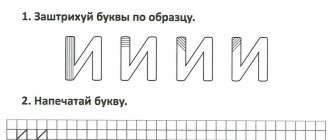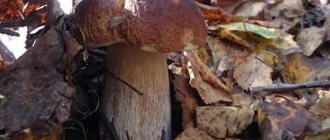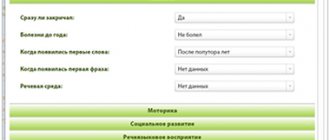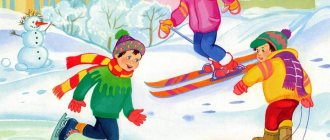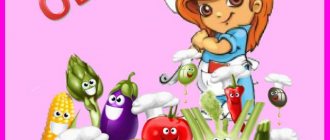A child’s clear and clear speech is the result of the care of his parents. To prevent your baby from having problems pronouncing certain sounds, you can conduct speech therapy classes at home. For children 4-5 years old (as well as younger or older), speech therapy rhymes are usually selected, which make it possible to turn exercises into a fun, entertaining game.
Speech therapy rhymes are rhyming sentences to automate the pronunciation of complex sounds and expand vocabulary. Voicing such rhymes forces the articulatory apparatus, memory, and imagination to work. Unfortunately, these exercises cannot completely replace classes with the participation of a specialist. But their implementation improves the situation so much that it will be much easier for the child to communicate with a speech therapist, and the number of classes will be significantly reduced.
Speech therapy rhymes for children with speech disorders
Speech therapy rhymes for children 4-5 years old are rhymed sentences, with the help of which the pronunciation of difficult sounds is automated. The vocabulary is also replenished, the articulatory apparatus, memory and imagination work.
Pronunciation classes
Important ! Learning will be easy and effective if there is a game in it. It doesn't matter whether the child is two years old or four or five years old. The process of memorizing rhymes in this case will be entertaining and interesting for both the child and the adult. During the moments of play, the baby will have time to hone his skills in pronouncing difficult sounds, relax, and get carried away by the process.
Such exercises cannot completely replace classes with a speech therapist, but they help to significantly improve the situation. The baby begins to communicate with pleasure with the specialist, which reduces visits to him.
Conditions for success:
- For beginners, conduct classes for 2-3 minutes. Gradually increase to 15-20 minutes.
- Exercise 2-3 times a day. Best after breakfast and nap.
- You should practice consistently. You can write an approximate summary of exercises, a lesson plan, so that a stable skill is formed.
- Exercise in a designated place for practicing, so that there are no distractions.
- Introduce playful moments, funny gestures and facial expressions into the exercises, you can sing rhymes. Then they will turn into a chant and will simultaneously develop their hearing.
- Praise for achievements.
- Don't force them to study if the child doesn't want to. Reschedule the lesson to another time.
Speech therapy poems for practicing the letter “l”
Progress of the game
Several children take part in the game. Children sit in a circle. In the center of the circle on the mat there is a box with objects and 6 boxes (green for soft sounds, blue for hard sounds)
.The letters are pasted on the boxes: n - the beginning of the word, s - the middle of the word, k - the end of the word.
Children take turns entering the circle and choosing one of the toys (cards)
.
Then, at the request of the leader, each of the children stands up, clearly pronounces the name of his toy (card with an image of an object)
and determines where he hears the sound that the leader named: at the end, in the middle, at the beginning of the word.
Then he determines its softness or hardness and places the toy (card)
in the appropriate box.
Children approve or correct the version they hear.
BEGINNING, MIDDLE, END
Goal: development of phonemic hearing - to teach children to recognize sounds and isolate them, determine the place of the sound in the name of an object.
Material: a box with various small objects whose names contain one of the sounds (for example, “m”
- and then in the box there is a castle, a gnome, a stamp, etc.).
The box is divided into three parts (n - beginning of the word, s - middle, k - end)
. As you master the game, objects are replaced with pictures.
Speech therapy nursery rhymes for children 5-6 years old
The game can consist not only of speech therapy rhymes for children 5-6 years old, but also of nursery rhymes. Nursery rhymes have been used since ancient times to develop the speech of very young children. Every child remembers them for many years. Hearing familiar sounds, he always smiles and rushes to repeat after his parent.
Producing vowel sounds in children
Note ! Nursery rhymes should be spoken slowly at first, then raising or lowering the pitch of the voice. You can experiment with timbre: speak angrily, and then gently - this way the child will read emotions. Also, the baby will seem to find himself in the world of a fairy tale, which will certainly captivate him in the future.
Examples of nursery rhymes:
- The mouse lived happily, sleeping on the fluff in the corner. The mouse ate bread and lard, but it wasn’t enough for the mouse!
- The broom was sweeping the floor, he was very tired! He sneezed and yawned, and then he lay down under the chair.
- Quiet the mouse! Cat on the roof! But kittens are even taller!
Speech therapy dictations for students in grades 1-4
2nd grade.
Autumn.
Strong wind blows. The sky is cloudy. It rains frequently all day. There are puddles all around. The birds flew away to warmer lands. Magpies jump around people's homes. It's a boring time. (27 words).
3rd grade
Farewell to autumn.
The weather in October is damp. It rains all month. The autumn wind is blowing. The trees are rustling in the garden.
At night the rain stopped. The first snow fell. It's light all around. Everything around became elegant. Two crows sat on a birch tree. Fluffy snow fell. The road is frozen. Leaves and grass crunch on the path near the house.
(49 words).
4th grade.
Departure.
The swamps began to freeze. The swamp birds were the first to set off.
Swans, geese and ducks were preparing to fly away. The old taught the young. Every morning the youth went for walks. She strengthened her wings for a long flight.
Clever leaders trained individual packs and then all together. There was so much screaming, fun, joy!
Only Gray Neck accepted fate. How she swam, how she dived! Water was everything for the duck.
(61 words). (According to D.N. Mamin - Sibiryak).
Conducting speech therapy dictation in 2nd grade.
Goals:
1.Identification of children with written speech disorders among 2nd grade students
in the following areas:
- Delineation of speech units at the level of words and sentences.
- Sound analysis errors.
- Designation of softness of consonants.
- Mixing of letters by acoustic-articulatory similarity, by kinetic similarity.
- Perseverations.
- Anticipations.
- Agrammatisms, disorders with:
- word formation,
- agreement,
- management,
- use of prepositions.
Dictations.
Modeling.
Andryusha and Lena took clay. The guys poured water into the jar. The girl makes a turnip. Here's the ponytail. There's a leaf here. Andryusha got a bunny and an elephant. White bunny. The elephant is gray.
Sisters.
Tanya goes to school. She is seven years old. And Sveta is small. She plays with dolls. Grandfather Petya brought an ABC book. Tanya teaches Sveta to read. The little girl looks at the pictures.
Lilies of the valley.
Seryozha and Polina entered the thicket of the forest. Lilies of the valley were blooming there. These wonderful flowers are beautiful! They look like little cups. Lilies of the valley love to grow in the wilderness.
Spring.
Still frost and cold. There is snow and snowdrifts all around. And it’s already spring in our class. There are tree branches in bottles and cans on the windows. Fragrant leaves have already appeared on the branches of the birch tree. And golden earrings hang on the alder branches. Just like in the garden in spring!
Conducting speech therapy dictation in 4 grades.
Goals:
1.Identification of children with written speech disorders among 4th grade students
in the following areas:
- Delineation of speech units at the level of words and sentences.
- Sound analysis errors.
- Designation of softness of consonants.
- Mixing of letters by acoustic-articulatory similarity, by kinetic similarity.
- Perseverations.
- Anticipations.
- Agrammatisms, disorders with:
- word formation,
- agreement,
- management,
- use of prepositions.
Dictations.
Reliable comrade.
Andryusha and Asya were sitting at the same desk. Andryusha always defended the weak. Asya was afraid of everything.
One day Andryusha brought a jar of spiders. Asya was scared. The boy felt ashamed.
After all, Asya is weaker than Andryusha.
The next day he met the girl at her
Houses. They went to school together. Along the way we came across dogs and a goat. Asya did not chicken out. A classmate was walking nearby.
Prickly beauty.
The foliage on the birch tree has turned yellow. Reddened leaves of aspens are falling. Only the Christmas tree doesn’t drop its needles. The tree changes its outfit gradually
.
For this, the tree needs about nine years. The prickly beauty does not sleep until late autumn .
In winter, the Christmas tree falls asleep. Heavy snowballs do not break the flexible branches of the tree. She looks elegant in a white hat and white scarf.
In winter it is warm in the spruce forest. Birds spend the night in it. Spruce paws do not allow the wind to pass through.
The Christmas tree will feel the arrival of a long spring day and come to life.
Songbirds.
How many
beautiful masters sing in a birch grove, in a wide field! The larks, thrushes, and nightingales are ringing in every possible way.
In the spring forest you will hear a song thrush. In a clear voice he sings out a hymn to spring. The Russian forest is filled with its ringing trill.
The lark is an early singer. A ray of summer sun just began to play on the horizon, in the clear azure
a joyful song is already sounding. You will not see the singer himself in the heavenly heights.
Best
singer of the Russian forest - the nightingale. He starts singing late at night. The wonderful sounds do not stop all night. You sit and listen to the most beautiful voice in the world.
Dictations.
1 class.
Squirrel. The squirrel lives in a hollow. The squirrel has a fluffy tail. The squirrel has a warm skin. She is warm in winter. She often sits on a branch. Cat. Misha had a cat. The cat's name was Ryzhik. Ryzhik's tail is fluffy. The boy often played with the cat. They were friends. Book. Uncle Yura brought a book. There is a bunny and a bear, Tanya and a ball. Elephant and horse. We love poetry. 2nd grade Squirrels. Boron smells like fragrant resin. Squirrels are jumping near an old pine tree. The animals took off their fluffy gray coats. Their backs and bushy tails became red. Throughout the long winter, the squirrels lived in the forest. They hid from the wind and cold in a warm nest. They are happy about the bright spring.
Favorite theater. Moscow has a puppet theater. Inna and Tatyana go there with joy. There is a wonderful clock on the wall. It's noon. The rooster calls the children. A bear, a goat, and a pig came out of the houses and started playing a song. The girls took tickets from the box office and sat down. The stage opened. The hall fell silent. 3rd grade Summer rain. It was a hot day. Suddenly there was a breeze. A blue cloud came running. She didn't block the sun. It began to rain. The sun illuminated the surroundings. Raindrops hit the grass and flowers heavily. They hung on leaves and blades of grass. A ray of sunshine played in every raindrop. Rain stopped. Look at the sky! Who built a beautiful bridge from the village to the meadows across the river? There is a light steam coming from the ground. The smell of wildflowers fills the air. Chris the dog. A little girl is lost. Grandma is in tears. They called Chris the dog to help. She sniffed the children's slippers and pulled her grandmother along with her. On the street, Chris quickly picked up the trail. And here is the fugitive. The baby was standing at the entrance to the park. Dogs adopt all human habits. An angry man is a mean dog. And the good man is kind. Trouble. The spring sun was shining brightly. We took the goats out onto fresh grass. There was a smell of smoke and burning. Dry grass was burning. The fire licked the lower branches of young trees. We cut down the spruce branches and began to put out the fire. Smoke came from the anthill in a thin stream. The ants lived through a long and difficult winter. They did not have time to meet the warm summer. The spruce and pine trees drooped. The birds don't sing. There are piles of ash on the hillocks
Inspection work for the year.
Grade 1 1. Dictation of words: KEY, SCARF, OLD WOMAN, CLEANING, DUCKLES, PORCH. 2. Compose and write down a sentence with one of these words. 3. Dictation Belka. The squirrel lives in a hollow. The squirrel has a fluffy tail. The squirrel has a warm skin. She is warm in winter. She often sits on a branch. Cat. Misha had a cat. The cat's name was Ryzhik. Ryzhik's tail is fluffy. The boy often played with the cat. They were friends. Book. Uncle Yura brought a book. There is a bunny and a bear, Tanya and a ball. Elephant and horse. We love poetry. 2nd grade Squirrels. Boron smells like fragrant resin. Squirrels are jumping near an old pine tree. The animals took off their fluffy gray coats. Their backs and bushy tails became red. Throughout the long winter, the squirrels lived in the forest. They hid from the wind and cold in a warm nest. They are happy about the bright spring. Word of reference: smells. Favorite theater. Moscow has a puppet theater. Inna and Tatyana go there with joy. There is a wonderful clock on the wall. It's noon. The rooster calls the children. A bear, a goat, and a pig came out of the houses and started playing a song. The girls took tickets from the box office and sat down. The stage opened. The hall fell silent. 3rd grade Summer rain. It was a hot day. Suddenly there was a breeze. A blue cloud came running. She didn't block the sun. It began to rain. The sun illuminated the surroundings. Raindrops hit the grass and flowers heavily. They hung on leaves and blades of grass. A ray of sunshine played in every raindrop. Rain stopped. Look at the sky! Who built a beautiful bridge from the village to the meadows across the river? There is a light steam coming from the ground. The smell of wildflowers fills the air. Chris the dog. A little girl is lost. Grandma is in tears. They called Chris the dog to help. She sniffed the children's slippers and pulled her grandmother along with her. On the street, Chris quickly picked up the trail. And here is the fugitive. The baby was standing at the entrance to the park. Dogs adopt all human habits. An angry man is a mean dog. And the good man is kind. Trouble. The spring sun was shining brightly. We took the goats out onto fresh grass. There was a smell of smoke and burning. Dry grass was burning. The fire licked the lower branches of young trees. We cut down the spruce branches and began to put out the fire. Smoke came from the anthill in a thin stream. The ants lived through a long and difficult winter. They did not have time to meet the warm summer. The spruce and pine trees drooped. The birds don't sing. There are piles of ash on the hillocks
4th grade Introductory diagnostics 1. Dictation. Autumn came. The hot summer flew by quickly. It often drizzles lightly. Gray clouds crawled across the sky. The grass in the forest clearing turned red. Autumn leaves float in puddles. A heap of ants darkens gloomily among the grass. The ants began to retreat to their homes. They rarely crawl out now. Two boletuses grew near an old stump. Mushroom caps looked cheerfully from the grass. A squirrel noticed them. She grabbed one mushroom and disappeared.
Speech therapy classes in the senior group on the production of the sound “v”
A speech therapy session in the senior sound [v] group begins with articulatory gymnastics. The main emphasis is on the exhaled air through the gap between the lips. It is important to catch the sound of the sound “v” - invite the baby to imagine how the wind blows.
Speech therapy sessions with a mirror
Sound production consists of:
- Imitation method. The child repeats after the adult, imitating him.
- Mechanical method. The child pronounces “y” and with his finger raises the lower lip to the upper incisor teeth. The sound should be "v".
- Using the sound "f". The child pronounces “f” as if exhaling air. Without stopping exhaling, he connects the vocal cords, as if “giving voice” - it turns out “v”.
After correctly setting the letter and a good result, children move on to fixing the sound in:
- Syllables: va-vo-woo-you and others.
- In the words: Ivan, here are the willows.
- In phrases and phrases.
At the very end, sound automation occurs with the help of tongue twisters, stories, and poems.
Progress of the game
In the middle of the site, draw a large circle or place a thick cord in the shape of a circle. Inside the circle is a “swamp”
. A group of children sits along the edge of the circle, the rest sit on chairs placed on one side of the area. Together with the children sitting on chairs, the presenter recites:
Along the path, along the path
Frogs are jumping and jumping.
Kva-kva-kva,
Frogs are jumping and jumping.
Kva-kva-kva.
Children sitting in a circle jump up and down pretending to be frogs. At the end of the poem, children sitting on chairs clap their hands (scare the “frogs”
).
“Frogs”
jump into
the “swamp”
: they jump over the line and squat down, pronouncing
“kva-kva”
with a deep exhalation.
At the end of the game, the leader asks the children to stretch, raise their hands up, and look at them (inhale)
.
SOUNDS AROUND A CIRCLE
Goal: development of phonemic awareness, recognition of sounds in the context of a word and determination of their place in the name of an object.
Material: a box with small objects or cards with objects depicted on them, arranged so that when they are named, a practiced sound can be heard in them; mat, 6 boxes: 3 - green, 3 - blue.
Methodology of Akimenko V. M.
Manual by V.M. Akimenko “speech therapy examination of children with speech disorders” presents a system for examining children starting from the fifth year of life. Particular attention is paid to the ease of application of techniques, reliable and high results. To help speech therapists, the book contains many tables to record the results.
Speech development of children in the senior group of preschool educational institutions using the example of spring topics
Currently, in addition to the manual, there is a special diagnostic case with teaching materials and a computer program disk that simplify the examination process.
Diagnostic case for speech therapist
Procedure for conducting the examination
The examination takes place on a computer. The child, looking at the screen, completes tasks that are decorated in bright colors. At the same time, the speech therapist can record progress and write comments.
At will, the specialist can use items from the methodological set.
All information in the program is recorded automatically.
Structure
The structure of the survey includes sections:
- Pronunciation of sounds
- General, articulatory and fine motor skills,
- Facial expressions, muscles,
- Phoneme perception
- Speech understanding
- Vocabulary,
- Coherence of speech.
Each section has its own tasks.
Analysis of the results obtained
After the examination, the speech therapist can conduct an analysis and justify his conclusion. Afterwards, the specialist draws up an individual work plan and a scheme of corrective measures.
With the help of tables, it is possible to track the child’s subsequent progress.
Program capabilities and scope
The program has many features:
- Maintain individual cards with data and subsequent work,
- The database and task sorting occur automatically,
- Speech therapy diagnostics is carried out in stages,
- Speech maps are formed,
Additional Information . If desired, you can create group protocols with examination results and print speech cards.
This manual can be used in their practice:
- Speech therapists,
- defectologists,
- Psychologists,
- Preschool teachers.
Progress of the game
The presenter shows how to make snowflakes from sheets of paper by cutting them. After the children have made a lot of carved snowflakes, he says that the snowflakes turned out, although different, but of the same color. Then the felt-tip pen friends came and gave the snowflakes colorful dresses. The presenter asks the children to color the snowflakes.
Since the snowflakes turn out to be openwork, it is necessary that the paper be stronger. Painting movements affect the development of fine motor skills of the hands.
FOX-PATRIKEEVNA
Goal: formation of correct articulation of the jaws and perioral muscles at rest.
Material: board ( "bridge"
) or wide ribbon, small dryers or cookies.
Progress of the game
The presenter says: “The clock has hands that go in a circle all the time. At the same time, the hour hand moves very slowly, the minute hand moves faster, and the second hand moves very quickly.
So our tongue must learn to move in a circle, like the hands of a clock. To do this, you need to open your mouth and make circular movements with your tongue along the inner walls of the upper and lower lips from left to right and vice versa.”
Children do exercises on command: “Like a clock hand - slower; like a minute - faster; like a second - even faster."
The presenter needs to ensure that the mouth is constantly open and the lower jaw remains motionless.
CAREFUL RADIO OPERATOR
Goal: development of a sense of rhythm, formation of speech breathing
Progress of the game
The presenter pronounces syllable rows, tapping or clapping each syllable. The child is told: “You are a cheerful parrot, and parrots repeat every word. Can you repeat after me and tap out each word with the edge of your palm? Be careful".
The child and the presenter sit opposite each other at the table. On command, the child begins to tap and repeat the syllables:
a) identical - ra-ra-ra;
b) with a change of tempo (slow - fast)
- ra-ra-ra-ra - ra-ra-ra-ra - ra-ra-ra - ra-ra-ra; ra-ra-ra-ra;
c) with increasing rows - pa - pa-pa - pa-pa-pa - pa-pa-pa-pa - pa-pa-pa-pa. It is necessary to monitor the achievement of coordination of voice and movements.
WATER
Goal: development of speech breathing (pronouncing a sound on one exhalation, drawn out, forming the correct pronunciation of the sound C.
Material: water tap, picture of children washing themselves.
